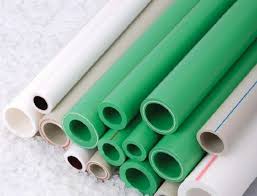Dec . 19, 2024 07:34 Back to list
hot water ppr pipe products
Understanding Hot Water PPR Pipe Products A Comprehensive Guide
PPR (Polypropylene Random Copolymer) piping has gained prominence in plumbing and construction due to its numerous advantages, particularly in hot water applications. This article aims to delve into the characteristics, benefits, and applications of hot water PPR pipes to provide a clear understanding for homeowners, builders, and industry professionals.
What is PPR Pipe?
PPR pipes are made from a type of polypropylene known as random copolymer. This material is known for its robust physical and chemical properties, making it an excellent choice for transporting water, especially hot water. The structure of PPR is designed to handle high temperatures and pressures, thus it's widely used in both residential and commercial plumbing systems.
Key Properties of Hot Water PPR Pipes
1. Temperature Resistance One of the most significant advantages of PPR pipes is their ability to withstand high temperatures. They can handle temperatures up to 95°C (203°F) without compromising structural integrity. This makes them suitable for hot water applications in heating systems, domestic hot water supply, and underfloor heating.
2. Corrosion Resistance Unlike traditional metal pipes that may corrode over time due to exposure to moisture and minerals, PPR pipes are resistant to corrosion. This longevity means fewer maintenance issues and prolonged service life, reducing the frequency of replacements.
3. Chemical Resistance PPR pipes are inert to most chemicals, making them incredibly versatile. They can transport hot water along with various additives used in water treatment processes without degrading, adding to their utility in different applications.
4. Lightweight PPR pipes are lighter than metal pipes, which simplifies handling and installation. This feature not only reduces labor costs but also minimizes the energy required for transportation and installation.
5. Seamless Connections PPR piping systems utilize a fusion welding technique that creates seamless joints. This welding process enhances the strength of the connections, preventing leaks and ensuring a longer-lasting piping system, which is vital for hot water applications.
6. Low Thermal Conductivity PPR pipes have low thermal conductivity, reducing heat loss during the transportation of hot water. This property helps maintain the desired water temperature, leading to greater energy efficiency in heating applications.
Benefits of Using Hot Water PPR Pipes
hot water ppr pipe products

The use of hot water PPR pipes brings numerous benefits to both residential and commercial environments
- Energy Efficiency By effectively maintaining water temperature and reducing heat loss, PPR pipes can contribute to lower energy costs over time
.- Environmental Impact PPR is a recyclable material, making it a more environmentally friendly choice compared to PVC or metal pipes. The long lifespan of PPR pipes also means fewer resources are spent on replacements.
- Cost-Effective Although their initial cost might be slightly higher than that of traditional pipes, the durability, efficiency, and low maintenance costs associated with PPR pipes make them a cost-effective long-term investment.
Applications of Hot Water PPR Pipes
Hot water PPR pipes are versatile and can be used in various applications, including
- Residential Plumbing Ideal for supplying hot water to kitchens, bathrooms, and heating systems in homes. - Industrial Applications Used in factories and production facilities for transporting hot water and steam.
- Heating Systems These pipes are commonly utilized in central heating systems, underfloor heating, and radiator installations.
- Solar Hot Water Systems PPR pipes are also suitable for solar thermal systems, providing a reliable and heat-resistant medium for transporting water.
Conclusion
Hot water PPR pipe products are an excellent choice for modern plumbing needs, offering a combination of durability, efficiency, and cost-effectiveness. Their superior properties make them an ideal solution for transporting hot water in various residential and commercial applications. As technology continues to evolve, the use of PPR pipes is likely to increase, further solidifying their place in sustainable and efficient plumbing practices. Investing in hot water PPR pipes means investing in quality, reliability, and peace of mind for years to come.
-
High-Quality PVC Borehole Pipes Durable & Versatile Pipe Solutions
NewsJul.08,2025
-
High-Quality PVC Perforated Pipes for Efficient Drainage Leading Manufacturers & Factories
NewsJul.08,2025
-
High-Quality PVC Borehole Pipes Durable Pipe Solutions by Leading Manufacturer
NewsJul.08,2025
-
High-Quality PVC Borehole Pipes Reliable PVC Pipe Manufacturer Solutions
NewsJul.07,2025
-
High-Quality UPVC Drain Pipes Durable HDPE & Drain Pipe Solutions
NewsJul.07,2025
-
High-Quality Conduit Pipes & HDPE Conduit Fittings Manufacturer Reliable Factory Supply
NewsJul.06,2025

